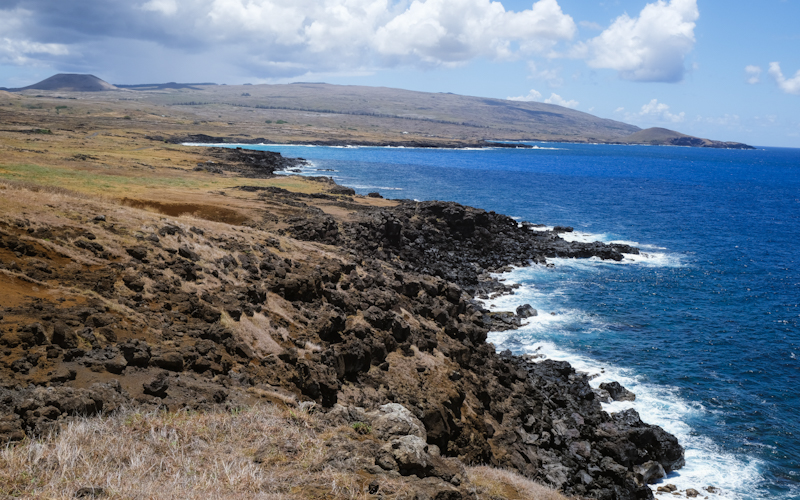Nestled on the northeastern cliffs of Easter Island's PŇćike Peninsula lie the enigmatic Neru Caves, a place steeped in the rich tapestry of Rapa Nui culture and history. These caves, particularly Ana O Keke and Ana More Mata Puku, have long been shrouded in mystery, offering tantalizing glimpses into ancient rites, traditions, and the lives of the island's inhabitants.
Ana O Keke, known as the "Cave of the Virgins," served as a sanctuary where selected young maidens, the Neru, underwent rituals involving the whitening of their skin as part of their initiation and cultural education. Folklore suggests that these chosen girls led a life of leisure, allowing their nails to grow to extreme lengths while being instructed in songs, dances, and traditional practices.
The dimensions of Ana O Keke are striking, with the volcanic tube stretching over 440 meters in length. The cave features various sections, some with vaulted ceilings and fluctuating heights, ranging from just 30 centimeters to 1.8 meters. Throughout the cave's length, there is a continuous filtration of water, creating lagoons of fresh water in certain areas. Moreover, the cave's ceiling is adorned with water droplets that, when illuminated by a flashlight, resemble a thousand diamonds, casting a sparkling allure throughout the interior.
The entrance, a mere 70 centimeters high, leads visitors into a chamber illuminated by natural light, showcasing unique petroglyph panels believed to allude to the rituals conducted within.
Near Ana O Keke, the eroded gully of Te Tiamo reveals remnants of Riare, a white paste for face painting, and red Kiea, an earthen pigment used for body painting. These pigments, mixed with vegetable juices, were stored in damp balls within Ipu, dried gourds suspended from the cave's ceiling.
In contrast, Ana More Mata Puku, located at the base of the same cliff, is smaller in scale, measuring only 7.5 meters deep, 3.5 meters wide, and reaching a maximum height of 1.4 meters. This cave also features petroglyphs, including interpretations by Spanish explorer Lloret i Prieto, who suggested a representation of a three-masted ship.
Exploring the depths of both caves unveils a world of ancient engravings and artifacts, offering insights into the spiritual and cultural practices of the Rapa Nui people. The petroglyphs within these caves serve as visual narratives, possibly depicting significant rituals, events, or symbols integral to the island's heritage.
In the shadows of the cliffs, where echoes of ancient chants and dances linger, the Neru Caves stand as symbolic gateways to a bygone era, inviting us to delve deeper into the enigmatic world of Rapa Nui culture. These caves serve as poignant reminders of the enduring legacy and mysteries that continue to captivate and intrigue us today, bridging the gap between the past and the present on Easter Island.

















